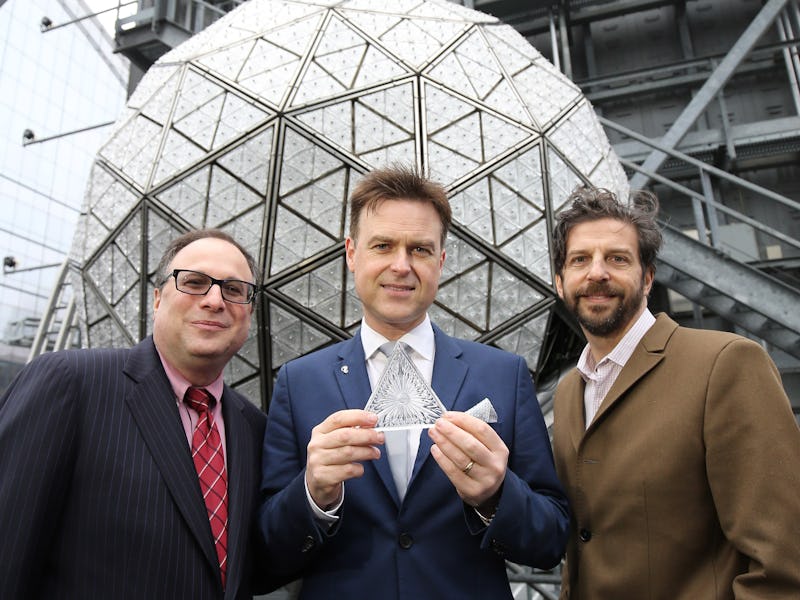The Times Square New Year’s Eve Ball Weighs as Much as 347,000 Testicles
We drop the numbers on this sucker.

The New Year’s Eve Ball is a 11,875-pound geodesic sphere, a testament to festivity, resolution, and solid engineering design. But let’s not get ahead of ourselves — it’s also just a big ol’ ball. Here it is, by the numbers:
16,000,000: Different colors the 32,256 light-emitting diodes that stud the ball can produce, given equal numbers of red, green, white, and blue LEDs. That’s perhaps over-ambitious, given that the average human can distinguish about 1 million different hues.
347,500: The number of human balls, given an average weight of 15.5 grams, that it would take to balance a scale holding the giant Waterford crystal ball.
2,688: The number of triangular crystals that form the surface of the geodesic sphere. The “geodesic” in geodesic sphere means “shortest line between two points,” which gets translated physically as a shape created out of triangles. Perhaps the most famous champion of geodesic structure was R. Buckminster Fuller (for whom the 60-carbon buckyball molecule is named); Fuller believed in the proportionally stronger power of the triangle-dome combo over that of traditional rectangular shapes. This comes down to the concept of degrees of freedom — you can rotate the sides of a square to form a parallelogram or diamond, for instance, but a triangle cannot undergo such deformational changes to its structure.
65: Yodas, which when stacked foot-on-head would equal the 141-foot ball drop.
6: Other balls that have been dropped throughout New Year’s Eve history in Times Square. This, the seventh incarnation, has been around since 2008.
1: Blue whale heart, which has roughly the same 12-foot diameter as the ball in the center of Times Square.